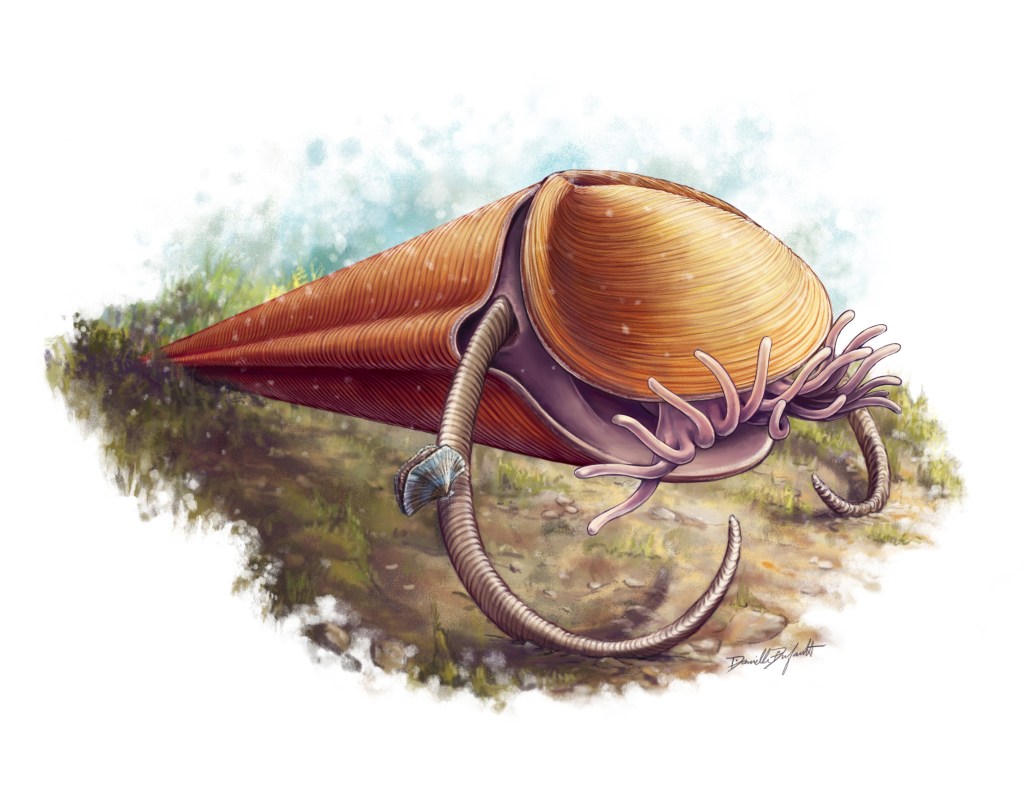We all know crocodiles are kick-ass enough to be a deserving mascot for a hair metal band, but back in prehistory they were real headbangers. A researcher at the University of Missouri has identified a previously-undescribed croc that had a plate of armor on its head, earning it the title Shieldcroc. The Shieldcroc fossils have helped scientists piece together the ancient history of modern crocodiles.
“Aegisuchus witmeri, or ‘Shieldcroc,’ is the earliest ancestor of our modern crocodiles to be found in Africa,” report co-researcher Casey Holliday said. “Along with other discoveries, we are finding that crocodile ancestors are far more diverse than scientists previously realized.”
Videos by VICE
It wasn’t only armored, it was enormous. According to the report published in PLoS-ONE, analysis of the skull and brain case served the basis for an estimate that Shieldcroc was 30 feet long, with a 5-foot long head. Those numbers come with a bit of leeway, as a complete skeleton has yet to be found. But using skull size to determine body length is common practice, and Shieldcroc was likely near that length.
“Scientists often estimate body size of crocodilians based on the size of the skull,” co-author Nick Gardner said. “However, estimating the body size of Shieldcroc was difficult, due to the enormous size of the skull compared to other crocodilians. To make a size estimate, we compared several features of the bone to many different species.”
Shieldcroc is the latest of a spate of new croc discoveries that dates to the Late Cretaceous, about 95 million years ago. Holliday studied a fossilized partial skull that was discovered in Morocco and had been held in the Royal Ontario Museum of Toronto for years before Holliday identified what it was.
In depth with Shieldcroc
Marks left by blood vessels on the top of its skull show that Shieldcroc had a large circular mound of skin on its head resembling a shield. The rest of the skull is long and flat compared to other croc species, suggesting the animal spent more time fishing than battling.
“We believe Shieldcroc may have used its long face as a fish trap,” Gardner said. “It is possible that it lay in wait until an unsuspecting fish swam in front of it. Then, if it was close enough, Shieldcroc simply opened its mouth and ate the fish without a struggle, eliminating the need for strong jaws.”
Because crocodiles haven’t changed their habits and habitats very much in the last 90 million years, studying ancient, extinct species can help provide insight into the future of present-day animals.
“Today’s crocodiles live in deltas and estuaries, the environments put under the most stress from human activity,” Holliday said. “By understanding how these animals’ ancestors became extinct, we can gain insight into how to protect and preserve the ecosystems vital to modern crocodiles.”
Lead photo credit: Henry Tsai/University of Missouri



